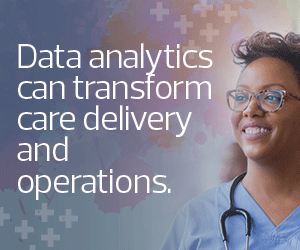How Does the Quintuple Aim Compare to the Quadruple Aim?
The Quadruple Aim and Quintuple Aim expand upon the goals spelled out in the Triple Aim. In 2014, the Quadruple Aim added the goal of improving the healthcare provider’s work life. Clinician burnout and staff shortages have been a concern in healthcare for years. Authors of the new aim argued that the positive engagement of the healthcare workforce “is of paramount importance in achieve the primary goal of the Triple Aim — improving population health.”
The pandemic exacerbated the issue, with many healthcare workers leaving the industry due to burnout as COVID-19 put pressure on the industry, making the Quintuple Aim as important in 2020 as it was in 2014.
However, another longstanding need was highlighted during the pandemic: health equity. In January 2022, a group of healthcare leaders — Dr. Kedar Mate, CEO and president of IHI; Dr. Lisa Cooper, professor of medicine at Johns Hopkins University School of Medicine and founder and director of the Johns Hopkins Center for Health Equity; and Dr. Shantanu Nundy, chief medical officer for Accolade — proposed the Quintuple Aim.
READ MORE: Learn how modern data platforms advance the Quintuple Aim.
Nundy explains that healthcare organizations began to realize that improving health and reducing costs at the expense of clinician well-being impedes progress overall.
“If you want to sustainably drive healthcare improvement you have to be able to also address burnout,” he says.
While inequity has been a longstanding issue in healthcare, Nundy says it was magnified by the pandemic.
“In the early days, many people saw COVID-19 as ‘the great equalizer,’ and then we very quickly realized that’s not true at all,” he says, “in terms of both who got COVID-19 and who had serious harm and death from it. Plus, with all the things happening socially within our country, it really created an opportunity to take what’s been here for decades and bring it much more to the forefront of healthcare.”
In an IHI blog, Mate explained the thinking behind introducing new aims despite initial pushback against the original Triple Aim. “At the time, some argued that you could not work toward all three aims at the same time without trade-offs. But the breakthrough proposition of the Triple Aim was that each aim pursued simultaneously reinforced the others. Even the skeptics found over time that pursuing the aims together is how to make progress on all of them. And so it is with equity. Making equity an independent aim — not the byproduct of the other aims — will make clear that each aim reinforces the other.”
How Can Technology Support the Quintuple Aim in Healthcare?
Digital health is a growing field and, supported by traditional IT, can make a major difference in a healthcare organization’s ability to achieve the Quintuple Aim. According to Nundy, the power of digital is its ability to increase accessibility, an important factor in reducing inequities.
“We have the opportunity with health IT to create digital experiences that can reach the unreached. Now, how you do that matters,” he adds. “You have to design those experiences with marginalized communities in mind first, not last or retrofitted. That means that when you’re building a website, you’re also building a mobile app experience, testing it with the marginalized individuals in our communities and having their feedback influence your decision-making.”
He points out that building something for the average person doesn’t necessarily mean it will work for everyone. However, building things intentionally, with all users in mind, means it’s more likely to work for everybody.
One area gaining momentum in healthcare is data analytics. Data gives healthcare organizations the opportunity to learn about people’s lived experience and understand the barriers patients are facing.
“We don’t consistently ask people about their lived experience and their social determinants of health,” says Nundy. “There’s a way to incorporate those questions through technology so that we’re collecting that data as part of the routine care journey. Doing so enables physicians to address those topics as part of the appointment.”
Artificial intelligence also has the potential to improve care outcomes and clinician workflows. Nundy says he’s incredibly optimistic about the latest generation of AI despite Big Data and predictive analytics falling short of the hype over the past 10 to 15 years.
FIND OUT: How does the AI Bill of Rights impact healthcare?
“Now, we’re talking about generative AI, and I think, in a way, a lot of us have been conditioned to put our head in the sand because there have been a lot of hype cycles that haven’t impacted cared in a meaningful way,” he says. “I think this time is different.”
He describes the moment AI is currently having as an opportunity to lean in and dismiss some of the cynicism developed over the years.
Nundy recognizes that AI has biases depending on how it’s used. For example, he points out that risk stratification models are trained on claims-based data sets, which can have significant biases because people who are marginalized often don’t engage with healthcare. That means that models will have less consideration of people who are marginalized.
However, use cases such as automated texting could make a difference in health equity, according to Nundy. A recent report from JAMA Network shows that evaluators of a study preferred chatbot responses to physician responses in more than 78 percent of evaluations.
“They found it more empathetic, and it was still accurate,” says Nundy. “That’s the use case that presents the bigger barrier for marginalized people right now. They just can’t get an appointment and, when they call, people don’t answer the phone. When they ask a question, they don’t get the answers they need. I think that’s an example of where there’s tremendous opportunity to advance health equity with these technologies.”
How Can Healthcare Leaders Integrate the Quintuple Aim?
It’s easy to look at the Quintuple Aim and say that an organization is working toward it, but how do healthcare leaders ensure that their organization is taking practical steps to achieve the five aims?
When making decisions about the organization, Nundy emphasizes the importance of leaders considering how that decision — whether it be about a new technology, procedure or something else — impacts all five areas of focus within the Quintuple Aim.
“That will actually help narrow your decision-making,” he says.
For example, many healthcare organizations that are focused on increasing colon cancer screenings in their community will focus on interventions such as a pop-up in the patient portal or a reminder in the electronic health record that prompts the physician to talk to the patient about scheduling a screening.
“However, if you look at it from a health equity lens, that intervention is only going to help people who come to the clinic and know who you are,” says Nundy. “You’re only going to help people who are already engaged in care, and you’re actually going to increase health inequity because the gap between the people who are engaged in coming to the clinic and the people who aren’t is only going to widen.”
The point of the new aim is to get clinicians and organization leaders to look at healthcare through a different lens and use that to drive their decision-making.
To increase colon cancer screenings, Nundy says, rather than just doing a pop-up clinic, an organization should work on proactive outreach to the community, leverage technology to get outside the clinic, and improve the digital onboarding and appointment scheduling on the website to bring awareness to the issue.












